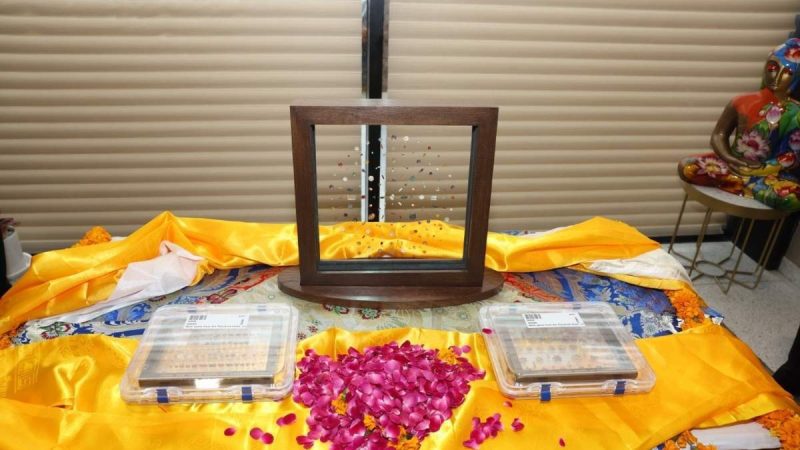It took 127 years, a colonial wound, an international auction, and a well-timed intervention, but the sacred Piprahwa relics of Lord Buddha are finally home. Their homecoming marks a powerful moment of cultural and spiritual reclamation, uniting diplomacy, heritage, and reverence in one historic milestone.
PM Modi Welcomes Buddha Relics Back Home
Prime Minister Narendra Modi acknowledged the return of the relics as a deeply symbolic and proud moment for the country. Terming it a “joyous day” for India’s cultural heritage, he noted that the relics not only reaffirm the nation’s civilisational bond with Lord Buddha but also reflect India’s growing commitment to reclaiming and preserving its sacred and historical legacy.
According to the Hindustan Times, their reappearance in a Sotheby’s catalogue earlier this year, as part of an international auction in Hong Kong, set off alarm bells in New Delhi. What was described in auction parlance as a “Buddhist reliquary ensemble” was, in the eyes of the Indian government, a sacred national treasure. The Ministry of Culture called the relics “the sacred body of the Buddha,” demanding that the sale be halted. The Financial Intelligence Unit followed with a notice, warning that proceeding could lead to financial crime allegations.
Finally, the auction was postponed. A week later, Sotheby’s reached out with a question: if an Indian entity stepped in to buy the relics, would the government object? But the issue remained that ownership could not rest with an individual, and the relics must not be resold.
The Buddha Relics: Cultural Significance
Enter the Pirojsha Godrej Foundation, motivated by a stated commitment to arts and culture, was moved by the news coverage. The Foundation expressed interest in acquiring the relics under the government’s strict terms. After several rounds of discussion, an MoU was signed on July 24, 2025, between the Ministry of Culture, Sotheby’s, and the Foundation.
Two nights later, a chartered flight from Hong Kong arrived in Mumbai carrying the precious relics. The next morning, the relics were flown to New Delhi and transferred to the National Museum. The ceremony that followed was reverent with Buddhist monks chanting quietly. Union Culture Minister Gajendra Singh Shekhawat and ministry officials observed a moment of solemn silence.
Discovered in 1898 at a stupa in Piprahwa, Uttar Pradesh, these relics are believed to contain the cremated remains of the Buddha himself. These were excavated by British officer William Claxton Peppé. A portion of what was unearthed, including 334 intricately crafted gemstones and ornamental beads, vanished into private hands during the colonial era. For over a century, they remained outside India, absent from the land where they were first enshrined sometime between 240 and 200 BCE, and now they are finally back.
The entire collection will be on public display at the National Museum for three months. For the next five years, a significant portion will remain on long-term loans, and the remainder will eventually be housed in a new cultural institution that the Godrej Foundation plans to establish in Mumbai.
Also Read: After Six Years, Buddha Air Restarts Direct Flights Between Kathmandu And Kolkata
More than just a repatriation, this is India’s first public-private partnership to retrieve lost antiquities. A fragmented past has been pieced together through persistence, diplomacy, and the belief that some things are simply not for sale.
Cover Image Courtesy: narendramodi/X

